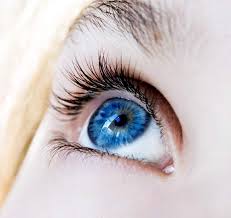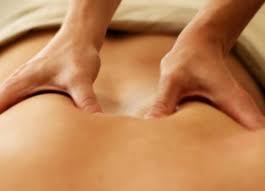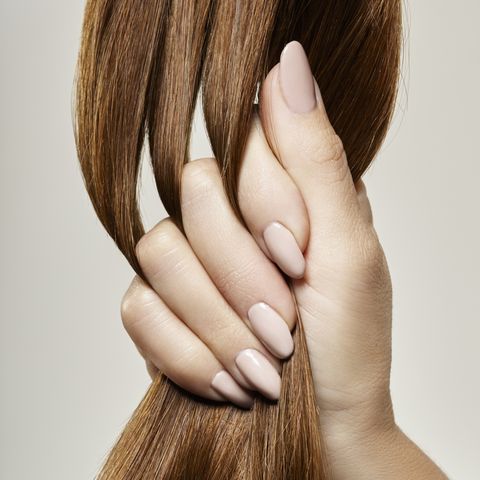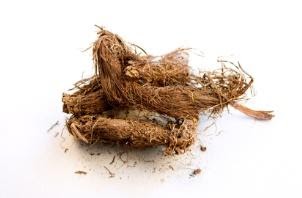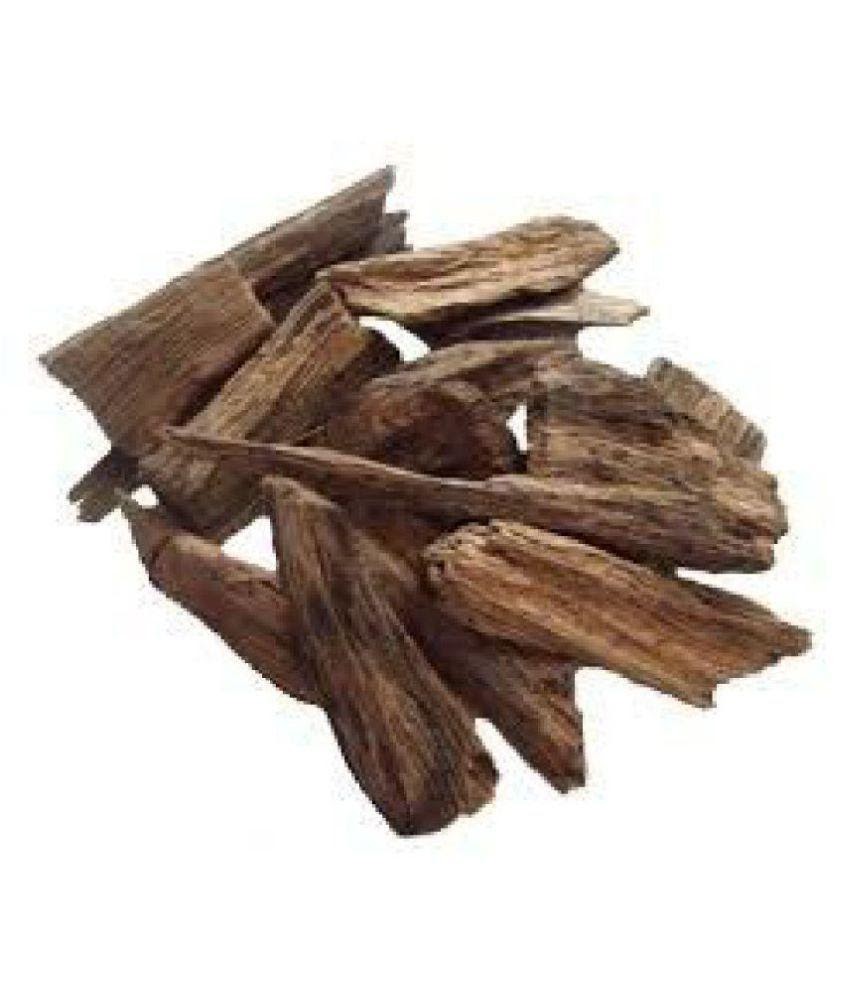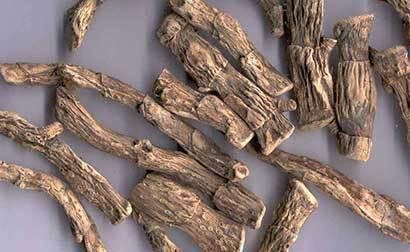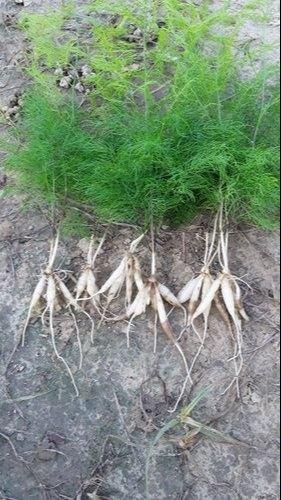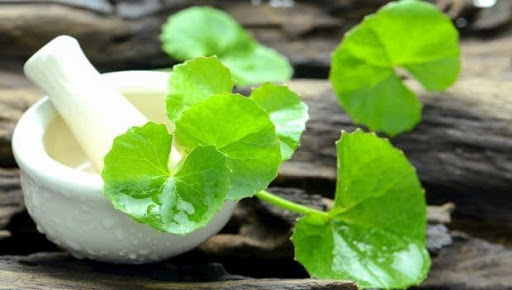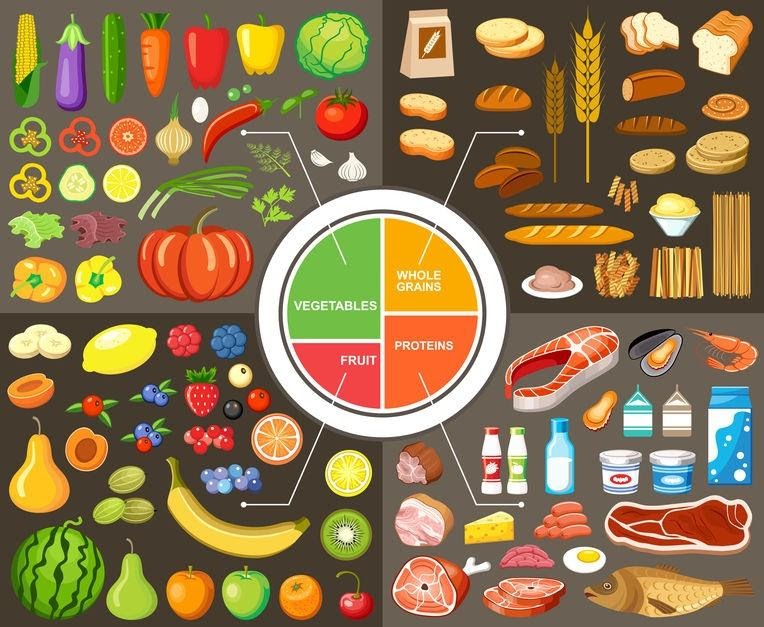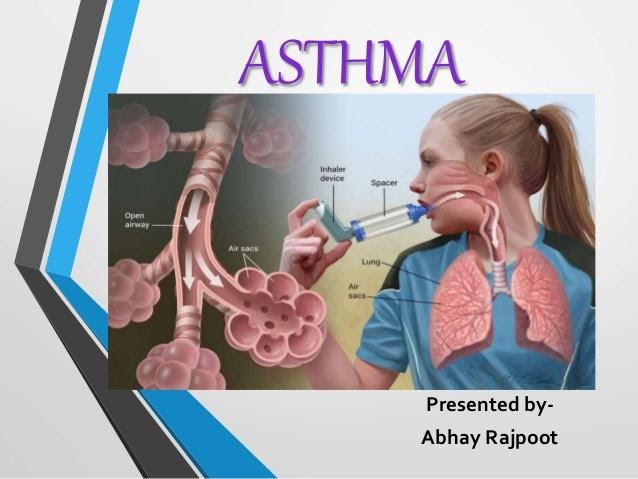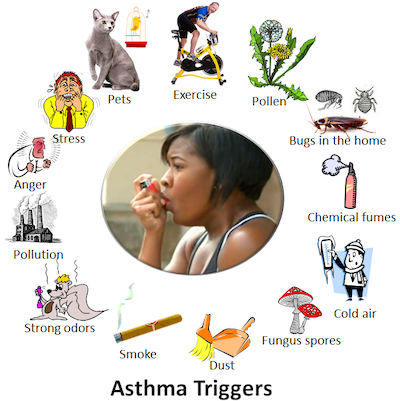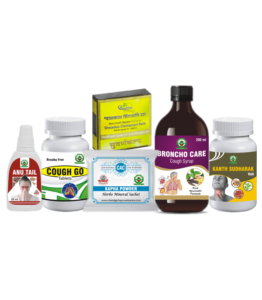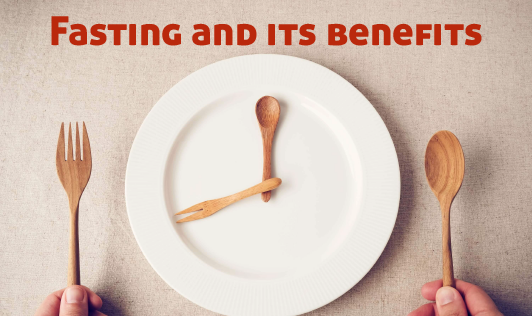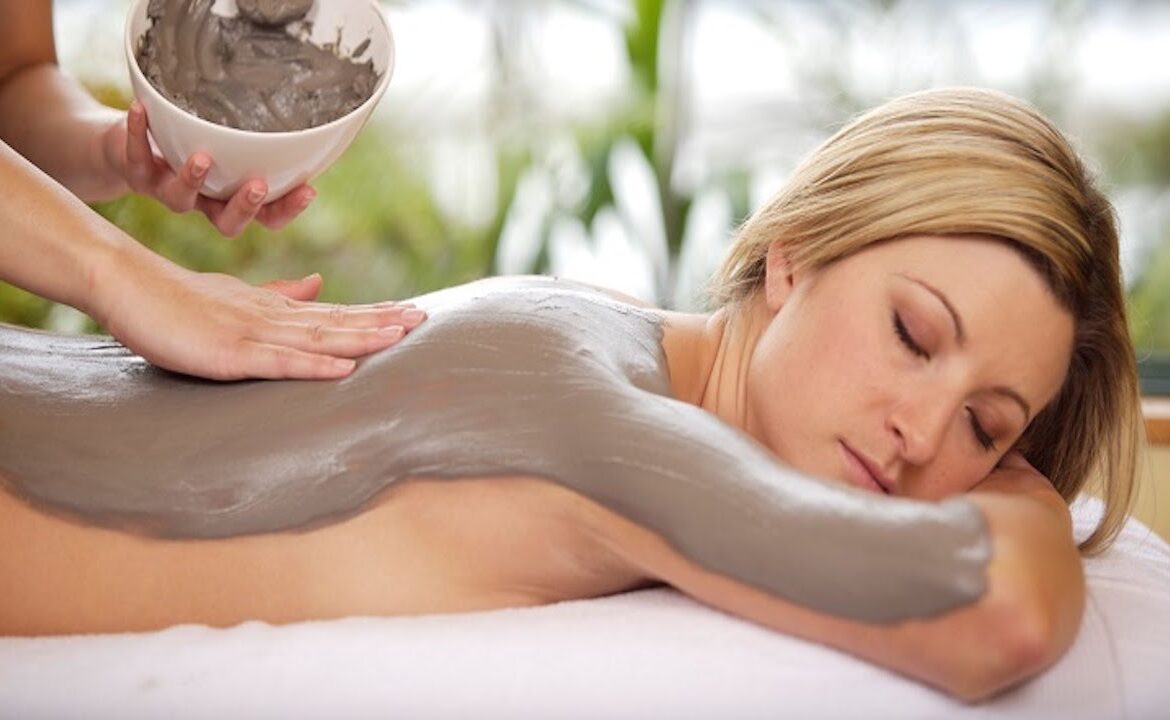Author Archives: Dr. Vaidya Karanvir Singh
Complete Eye Care
- April 19, 2021
- Posted by Dr. Vaidya Karanvir Singh
- 0 Comment(s)
Getting routine eye checkups is just one of various ways you can enhance your eyesight and prevent injuries or infections that could harm your eye vision. Keep reading to learn various ways you can improve your eyesight.
Get enough key vitamins and minerals
Vitamins A, C, and E, as well as the minerals like zinc, contain antioxidants that can be beneficial in macular degeneration. It is a condition in which the macula (the part of the eye that controls central vision) starts to deteriorate.
Food sources for these important nutrients include a variety of colorful and seasonal vegetables, and fruits, such as:
- Carrots
- Red bell peppers
- Citrus fruits
- Broccoli
- Spinach
- Bathua
- Strawberries
- Sweet potato
- Other green vegetables
Foods rich in omega-3 fatty acids, such as flax seeds, and salmon fish are also recommended for overall eye health.
Enough intake of the carotenoids
- A few other nutrients are also crucial to improve eyesight. Among them are Zeaxanthin and leutin, which are carotenoids found in the retina of the eye.
- You can get them from green leafy vegetables such as broccoli, spinach, fenugreek, zucchini, and eggs as well.
- Lutein and zeaxanthin can also be consumed in supplement form.
- These carotenoids help in protecting the macula by improving pigment density in that particular part of the eye, and absorbing UV rays (ultraviolent) and blue light.
Consumption of Fennel seeds
- Ancient people called fennel, ‘the herb of sight (vision)’ for a good reason. Nutrients and antioxidants present in this herb slow down the progression of diseases like cataracts and support healthier eyes.
- A bigger variety of fennel seeds should be used for this practice. Take one cup of almonds, fennel seeds, and sugar to a grinder mixer jar and grind this to a fine powder.
- Consume one tablespoon of this herbal powder with one glass of warm cow’s milk before going to sleep.
- Consume this for 40 days and see for the improvement in your eyesight.
Wear protective eyewear
- Whether you are playing racquetball, working in your motor garage, or doing a science experiment in the classroom, you must protect your eyes with appropriate protective eyewear.
- Tough, appropriate eyewear is required if there is a risk of strong chemicals, sharp or blunt objects, or materials such as wood shavings, metal shards, or even a stray elbow playing during a basketball game, entering your eye.
- Many protective spectacles are made with a kind of polycarbonate, which is around ten times tougher than other types of plastic.
Quit smoking
- You already know smoking is very bad for your respiratory system and your heart, not to mention your hair, skin, teeth, and just about every other body part.
- That includes your eyes, as well. Smoking dramatically increases your risk of developing age-related macular degeneration and cataract.
- Fortunately, within the first hours of quitting, your eyes, lungs, heart, and other body parts can start to rejuvenate from years of tobacco-induced harm.
- And the longer you can restrict cigarette smoking, the more of your blood vessels will get advantage and inflammation will ease off throughout your eyes and the rest of you.
Keep your hands and lenses clean
- Especially your eyes are more vulnerable to germs and infections. Even things that just irritate your eyes can affect your vision.
- To avoid such things, you should always wash your hands before touching your eyes or wearing your contact lenses.
- It is also super important to disinfect your contact lenses and wash your hands as instructed.
- You should also replace your contact lenses from time to time as advised by the provider or your doctor.
- Germs present in your contact lenses can result in bacterial infections of the eyes.
Exercise
Some eye exercises may help in making your eyes more flexible and healthy. These will maintain optimal vision and will improve blood circulation to the eyes. These exercises will reduce too much strain on your eyes and also improve your power of concentration.
Rotation of eyes
For an instance, you can try rotating your eyes in both anticlockwise and clockwise directions for ten seconds each. Blink in between the sets of an exercise to give your eyes some rest. You can also try fluttering as well. Blink your eyes quickly for ten to thirty seconds repeatedly. Practice this two times a day.
Focus change
This exercise works on concentration power and challenging your focus. It should be done in a sitting position.
- Hold your index finger a few inches away from your eye.
- Focus on the top of your finger.
- Slowly move your index finger away from your face, holding your focus
- Look away for a few seconds, into the distance.
- Focus on your outstretched index finger and slowly bring it back toward your eye at starting position.
- Look away from your finger and focus on something in the distance.
- Repeat this two to three times.
Follow the 20-20-20 rule
- Your eyes work hard throughout the day and need a break in between hours now and then. The strain on the eyes can be especially intense if you work at a computer or laptop for a long duration at a time. To reduce this strain, follow the 20-20-20 rule.
- That means every 20 minutes, you should stop staring at your computer and look at something 20 feet away for 20 seconds.
Bharmari pranayama:
- Sit in a sukhasana (crossed leg).
- Close your eyes and ears by slightly pressing the thumbs on them.
- Place your index fingers in between your eyebrows, little and ring fingers near nostrils.
- Focus your attention in the middle of your eyebrows.
- Inhale deeply through the nose, hold the breath for two to three seconds then slowly exhale through the nose while producing a humming sound like a bee. Your mouth must be closed.
- Repeat this five times.
Trataka
- Sit down comfortably in sukhasana, or Padmasana.
- Place a candle around two feet far from where you are sitting.
- Light the candle and start gazing at the flame without blinking.
- You can count numbers in your head to keep a time record and for your mind to not interrupt.
- Gaze as long as you can. The longer you do, the better.
- Doing trataka improves your concentration power and vision. This eye exercise reduces high myopic eye powers.
- A patient who are diagnosed with migraine, and epilepsy should not practice Trataka
Marma Chikitsa
- April 19, 2021
- Posted by Dr. Vaidya Karanvir Singh
- 0 Comment(s)
Marma Chikitsa is an important part of Ayurveda text that helps us to maintain health by cleansing blocked energy.
The word Marma is derived from Sanskrit’s‘ Marin Maranae’. The Sanskrit shloka, “mriyatae asmin iti marma” means ‘there is risk of demise or serious damage to health when these marma points are extorted. Hence, these areas are called marma. Marma in Sanskrit also means obscured or secret. A Marma point is a junction on the body where two or more kind of tissue (connective tissue) meet, such as bones, muscles, tendons, ligaments, or joints.
107 Marma Points in Ayurveda for Healing
Marma therapy uses 107 marma points or “doorways” into the body and consciousness(Awaken state). The mind is considered the 108th marma of the body.
Major marma points correspond to the seven chakras of the body, or energy core of the body, while minor points radiate out along with the torso and limbs. These points range in size from 1 to 6 inches in diameter. The points were mapped out in detail thousands of years ago in the ‘ Sushruta Samhita ’, a classic Ayurvedic text.
The points cover both the ventral and dorsal aspect of the body, including
- 22 points on the lower extremities
- 22 points on the arms
- 12 points on the chest and stomach
- 14 points on the back
- 37 points on the head and neck
What Happens During Marma?
- In Marma chikitsa, very light stimulation of points on the body is given. It removes blockages and opened up channels from the marma points giving physical and psychological relaxation and strength to the body.
- This is an intense process that works with these subtle and sensitive energy points to open the energy channels in the body are called strotas.
- Marma points, when lightly pressed on the skin can activate a chain of positive events.
Methods of Application of Marma Therapy
- Ayurveda doctor says the pressure (while stimulating marma) should be optimal with contact time for 0.8 seconds (one cardiac cycle) and it should be repeated for ten to twenty times (optimal respiration rate per minute) in one sitting while others say six-time stimulation in one sitting is enough.
- Medical varmalogy (systematic study of vital points) affirms 12 stimulation methods for each marma point to ease 48 different diseases.
- The uniqueness of the art of marma is in abating forty-eight various diseases by stimulating a single marma point.
The following are the general rules to be followed while providing marma treatment:
- Fingernails should be cut properly on both hands and the varmam point should not be touched by the fingernails.
- Don’t talk to others while receiving treatment and make the patient sit or lie down during the procedure.
- It is enough to cure the diseases by rendering varmam treatment two times a week. But depending on the requirement of the patient and the intensity of the disease, it can also be administered daily.
- For indoor patients, the treatment can be given once in six hours daily (four times a day).
- After rendering treatment to each patient, it is required to touch the wall or any wooden objects before treating the next patient. This is to avoid the transfer of the energy from one patient to another.
- There are no dietary restrictions usually for this treatment but it is better to avoid the intake of curd and greens at night.
- The pressure applied should be based on the age and the individual condition of the patients.
- Don’t provide this treatment to patients who come with complaints of snakebite, scorpion bite, and cases of poison. Make sure that patient is neither fasting nor full stomach.
- Preferable times are morning hours after rising from the bed and after clearing bowels.
There are 12 methods of marma application as following
- Gentle movement
- Mild tapping
- Mild movements
- Clenching the marma point along with the muscle
- Slippery pinches
- Pressing point with a single finger
- Gentle stroking with fingers
- Placing the energy on the marma point
- Balancing the energy of the points in the bone and joints
- Transferring energy from one point to another
- touching and lifting the marma point
- Strengthening one nerve as that of the other
All these twelve practices can be executed on a marma point. The application of these twelve techniques on a single point is capable of curing 48 various diseases.
Benefits
Marma therapies are profound and work at many stages – physical, mental, emotional, and spiritual and can develop dramatic shifts in the body. Because marma points are required channels through which the healing, sustaining, and vital life force enters an individual’s body, their potential for harmonizing all aspects of physical and mental health is excellent. Marma point therapy may offer the following benefits:
- Increase immunity
- Clears emotional blockages
- Enhance energy level
- Gives pain relief
- Improves digestion, and assimilation of food
- Encourages deep sleep
- Increases blood circulation to the skin
- Increase creativity
- Releases trauma
- Amplify intuition
- Facilitates the experience of relaxation and peace
- Strengthens internal organs
- Balance tridoshas
- Slow down the aging process
- Effective in chronic or acute pain, both locally and distally
- Detoxification at all cellular levels.
- Significant improvement in bodily functions, especially immunity
- Healthier skin and a radiant appearance of the face
- Balances body temperature
- Releases neurotransmitters such as serotonin, melatonin for improved cognitive function
FOOD AND LIFESTYLE FOR HEALTHY HAIR
- April 19, 2021
- Posted by Dr. Vaidya Karanvir Singh
- 0 Comment(s)
BEST FOODS FOR HEALTHY HAIR GROWTH
KESHYA GANA
This group includes herbs which have specific action on hair, when used externally or internally. It is further classified into two sub categories, one which promotes good hair growth and the other that prevents graying of hair.
HAIR GROWTH PROMOTING HERBS
- Coconut
- Sesame
- Triphala
- Vibhitaka
- Gunja
RANJAN – NATURAL COLOUR PRESERVERS
- Bhringraj
- Keshraj
- Mango seed
- Triphala
- Indigo
- Vibhitaka
- Mehendi
- Japa (shoe flower)
FOOD ITEMS FOR HEALTHY HAIR
According to Ayurveda food items listed below can be consumed on daily basis to promote healthy hair
MOONG BEAN
Moong bean is rich in proteins that are easily assimilated and absorbed in the system. You can gain all the benefits of milk without lactose trouble, as moong soup is the closest alternative to milk. Moong also has the abilities to soaks up the bad cholesterol.
As cholesterol circulation in our hair follicles affects hair growth and also triggers premature graying. Moong bean is high in antioxidants, thus it prevents age-related hair damage. Adding a bowl of moong bean to your daily diet.
AMLA
Amla (Indian gooseberry) is one of the best superfoods. It is rich in antioxidants. This time tested herb promotes hair growth and prevents premature graying of hair. Amla prevents and cures scalp inflammations and dandruff too.
You can have Amla in diet as a juice, whisked in smoothies, or you can just have a spoonful of its powder at bedtime. Powdered Amla as capsules or tablets is also a great choice as a daily supplementation.
CUCUMBER
Cucumbers keeps your body hydrated and reduces inflammation. Cucumber seeds are cooling and help in balancing the heat related stress on the hair. Skin of cucumber is rich in silicon and sulphur, which promotes hair growth.
Cucumber smoothies along with coriander and mint really make for a great drink to start your day, especially in summers or for pitta prakruti people (whose body heat is higher than normal). Cucumber should be consumed daily as a snack or salad.
BUTTERMILK
Well-churned yogurt or Buttermilk, mixed with double amount of water and spiced appropriately works as a hair elixir. Buttermilk if taken along with meals helps absorb vital hair nutrients from the food, especially calcium.
Buttermilk spiced with coriander and cumin seed powder is a great meal accompaniment. Buttermilk is a Swasthahita dravya, and the habit of consuming buttermilk after lunch is excellent for hair health as well as overall health.
NUTS AND ALMONDS
Hair is naturally vata-dominant and therefore, it is prone to dryness when the vata aggravates. So, it has a natural affinity for soaking up all the good oils that we take internally or apply externally. Nuts and almonds give a boost of Omega-3 fatty acid, Vitamin E and Biotin.
Walnuts, Almonds and chironji are rich in natural oils that are beneficial for hair growth and vitality, makes the hair lustrous, strong and durable.
So never skip your daily dose of nuts as a snack between meals. Avoid the salted fried ones. You can incorporated them in smoothies, salads or they can be consumed as flavoured, fancy nut milk drinks.
MORINGA
Drumstick leaves and legumes make a great hair supplement, rich source of major vitamins and minerals which our body needs. The antioxidants present in them protect your hair follicles from damage, slows the effects of aging, balance the hormones.
Moringa is proven to be rich in anti-inflammatory compounds and prevents dandruff and other scalp sensitivities.
PEANUTS
You must be wondering why I’m mentioning nuts AGAIN?
Well, this special nut deserves a special mention away from the other nuts I mentioned earlier. Often taken for granted, peanuts can transform our hair completely.
As, they are rich in natural oils, which hair needs to look full of life and lustrous, rich in calcium and silica. Peanuts offer tensile strength to the hair. The high vitamin E, magnesium, zinc and biotin content in peanuts promotes healthy hair growth.
Soak the peanuts overnight and have them in morning, it can be added to salads, or you can just eat it as a snack.
SESAME SEEDS AND CUMIN SEEDS
This unique combination works wonders for hair and bones. Sesame is rich in calcium, while cumins help it to get absorbed better in your body. There is a reason sesame is included in keshya dravya(herbs that promote hair growth).
The easiest way to include these in the diet is to eat them after your meals. Consuming them regularly will never let you be deficient in calcium. Plus, jeera is a great appetizer and it ensures our body absorbs all the nutrients it needs.
GHEE
According to Ayurveda butter should be churned out of curds and then heated to make ghee. And when we talk about ghee in ayurveda, we are specifically talking about Cow ghee.
Buy ghee that is produced by the traditional curd-churning method, or even better if you learn to make it at home. Ghee is excellent for your hair. As it is rich in vitamin A, D and E. Have a spoon before you start the day, or at bedtime. If consuming it directly puts you off, just mix it in just about anything – rice, roti, dal, sabzi etc. But never skip this hair elixir. Ghee is a Swastha Hitakar food that is excellent for everyday consumption.
COCONUTS
Coconut is a superfood, which is experienced and proven through the years of our great culinary heritage. Ayurveda specifically groups coconut under the group – Keshya, which are a group of foods that have potent effects in inducing good hair growth like I mentioned earlier, preventing greying and other hair problems.
Coconut is a versatile food item and can be used in many dishes. You can even consume a whole coconut as a snack.
TRIPHALA
Triphala is a rejuvenator and among one of the best Rasayana herbs. It prevents aging, is antibacterial, promotes hair growth, aids digestion,prevents dental cavities and prevents greying (Varnya).
A spoonful of Triphala at bedtime or in early morning can help your hair be free of grays and grow lush and thick.
CURRY LEAVES
Curry leaves apart from there wonderful taste, have potent health benefits. They are rich in iron and folic acid. Curry leaves also prevents premature greying and reverse hair damage.
You can just make them into chutneys (wet and dry) and can have with rice, roti, or you can include it in every curry.
METHI SEEDS
Methi’s plenty of benefits and one of them is good hair. Methi is rich in phytoestrogens and is therefore, a natural stimulator of a thick hair that is devoid of grays.
Methi seeds balances the Vata dosha in the body and therefore, are very good for hair and bone. Methi is also a natural anti inflammatory so, it reverses stress damage on hair.
Soaked, crushed methi can be taken once daily with a glass of water. You can consume sprouted methi in the meals. It can also be added to curries, salads and dals for an amazing flavor.
POMEGRANATE
Pomegranates are tropical elixirs. Pomegranate have Anthocyanins in large amounts. This compound is an excellent anti-aging agent and prevents oxidative stress on skin, hair and the other organs.
Pomegranates also have cholesterol-lowering abilities and hence, prevent cholesterol linked graying and hair loss. It balances the hormones and is a rich source of iron.
You can eat them in salad, and can also eat just as a snack. Pomegranate juices and smoothies also make for good health drinks.
FENNEL
Fennel is an excellent hormone harmonizer. For all the hair fall which can be metabolically linked to thyroid disorders, Type 2DM, and PCOD, you can correct these issues by using fennel regularly in your diet.
Fennel reduces inflammation and expells out the blood toxins.
Fennel water made out of soaked, crushed and sieved fennel seeds is a very cooling drink best when the sun is at its peak, during the afternoon.
EXTERNAL APPLICATION
DRY HAIR
- Mix 5 tbsp each of besan and curd along with 2 tbsp olive oil.
- Apply the mixture to dry hair.
- Leave it on for 20 minutes and shampoo off. Make sure you condition.
The besan strengthens your roots while the curd and olive oil will add moisture and shine to the hair.
FOR NORMAL HAIR
For nourishing your strands and to keep them healthy and shiny,
- Prepare a mixture of 2 tbsp each of gram flour and almond powder along with one egg white
- Mix and apply the mixture to hair.
- Shampoo it off after 30 minutes.
FOR OILY HAIR
- Mix two tsf each of besan and ground methi seeds in coconut milk.
- Massage this into your scalp and leave on for an hour.
- Shampoo and condition post this.
FOR DAMAGED HAIR
You don’t necessarily need expensive products to repair and rejuvenate dry or damaged strands. These genius homemade deep conditioning recipes works wonders.
BANANA MASK
- Blend one ripe banana and add 4 tbsp coconut oil, 1tbsp glycerin and 2 tbsp honey to the mixture.
- You need a smooth paste to ensure that it washes off properly and does not leave bits in your hair.
- Apply this mixture to your hair and cover with a shower cap. Wash off after 30 minutes.
EGG HAIR MASK
- Mix three egg yolks with 3 tbsp olive oil and add a few drops of any essential oil, any oil of your choice.
- Leave the mixture on your hair strands for 20 minutes before shampooing it off with warm water.
ALOE VERA MASK
- Mix 5 tbsp of aloe vera gel with 2 tbsp of a silicone-free conditioner.
- Apply the mixture to hair and use a wide-toothed comb to comb it in thoroughly.
- Leave it on for 20 minutes before washing off.
YOGA AND PRANAYAMAS
Yoga is the best way to bring harmony between the body and soul, and live a healthy life. But how can we stop hair loss with yoga?
Well, certain yoga postures and pranayama, breathing exercises can improve circulation throughout the body, therefore in your head too and promote healthy hair to prevent hair fall.
Few yoga asanas and pranayamas you can follow for hair growth is mentioned below
- Adho Mukha Savasana
- Uttanasana
- Apanasana
- Sarvangasana
- Ustrasana
- Uttanpadasana
- Balayam Yoga – You need to rub the fingernails of both hands together. Curl your fingers inwards so that they point towards your palm. Now, bring your hands together so that the nails of all the fingers come in contact with each other. Make sure each nail touches the corresponding nail in the other hand. Rub them vigorously for 5 minutes. Don’t use the thumbnails for this exercise.
- BHASTRIKA pranayama
- KAPALA BHATI pranayama
- ANULOM VILOM (Alternate breathing)
AYURVEDIC VIEW ON AGE RELATED MEMORY LOSS
- April 19, 2021
- Posted by Dr. Vaidya Karanvir Singh
- 0 Comment(s)
ARE YOU FORGETFULL?
ALWAYS WORRIED ABOUT PAST, FUTURE AND PRESENT?
WHAT IS MEMORY?
It is the Capability of the brain by which information or the data is encoded, stored, and retrieved in needed.
The information is retained in our brain over a period of time may be lifetime for the purpose of influencing future action.
MEMORY LOSS- If the person is not able to remember the past events, it would be impossible for language, relationships or personal identity to develop.
It is usually described as forgetfulness or Amnesia.
CAUSES-
- Medications- Use of medications or a combination that causes forgetfulness or confusion. For Ex.- Medication of Hypertension, Chronic diseases, long term use of antibiotics
- Excessive thinking
- Minor head trauma or injury- A head injury from a fall or accident even if you don’t lose consciousness can cause memory problems.
- Emotional disorders- Stress, anxiety or depression can cause forgetfulness, confusion, difficulty concentrating and other problems that disrupt daily activities.
- Alcoholism- Chronic intake of alcohol can seriously impair mental abilities. By interacting with medications alcohol can also cause forgetfullness or memory loss.
- Vitamin B-12 deficiency- Vitamin B-12 helps to maintain healthy nerve cells and red blood cells. Vitamin B-12 deficiency is more common in older adults and also further leading to memory problems.
- Hypothyroidism- An underactive thyroid gland may lead to forgetfulness and other thinking problems.
- Brain diseases- A growth or tumor or infection present in the brain can cause memory problems or other Forgetfulness as in Dementia.
Ayurveda Aspect-
There are three Dosha’s in Ayurveda- The Vata, Pitta and Kapha
Vata is “Gamansheela” or responsible for movements taking place in our body.
- This Vata Dosha Along with the Kapha Dosha is responsible for memory Loss.
- Memory loss is termed as “Smriti Bransha” in Ayurveda.
It is a Vata Vyadhi or Vatik Disorder i.e. imbalance of Vata dosha.
SINGLE HERBS USEFUL IN MEMORY LOSS
Variety of Herbs is useful in memory loss like-
- JATAMANSI
- TAGAR
- VACHA
- SHATAVARI
- SHANKHPUSHPI
- BRAHMI
- HARIDRA
- GINKGO BILOBA
- ASHWAGANDA
- AMALAKI
Detailed description of some of the Herbs is described below-
JATAMANSI-
It is known as “Tapaswani” in Ayurveda
- According to Ayurveda, It acts as a brain tonic and also helps to improve memory and brain functions by preventing cell damage due to its antioxidant property.
- It helps to calm down the brain and manages anxiety as well as insomnia.,
- It helps in preventing wrinkles due to its Snigdha (oily) nature.
- It also promotes wound healing due to its Ropan (healing) property.
- USAGE- take Jatamansi powder along with honey once or twice a day helps to improve memory functions.
- You can also take Jatamansi tablets or capsules which are also readily available in the market.
- Jatamansi oil application on the skin helps manage in skin infections and prevents aging due to its antifungal and antioxidant activities.
- Good for hair growth as it helps to increase the follicular size and elongate the growth phase of hair.
- Root paste of this plant can also be applied on hair to improve hair strength and growth
TAGAR-
- It is a hairy herb that growing in the temperate regions of the Himalayas and Khasia.
- Root of Tagar relaxes the central nervous system due to its sedative and anxiolytic properties thus helpful in reducing anxiety and improving the sleep.
- It is beneficial in management of Blood pressure.
- It possesses antispasmodic and analgesic properties thus help to relieve muscle pain.
- Vata balancing properties- Take Powder of Tagar along with milk helps in inducing sound sleep by balancing vata.
External Application– It inhibits the growth of skin pathogens due to its antibacterial and antimicrobial properties so helps in managing skin diseases - Note– It is advisable not to take this along with sedatives or CNS depressants as it might prolong the drowsiness because of its sedative activity.
VACHA-
- In Ayurveda, Vacha is known as a rejuvenating herb, the term “Vacha” denotes “speaking clearly”.
- It balances the Vata dosha or it acts on the nervous system and it is having Medhya Properties (Improving the Intelligence).
- How to Take- In order to manage speech disorders take Vacha powder along with honey on a daily basis.
- Expectorant Property- It also helps in the management of cough by promoting the removal of sputum from the air passages due to its expectorant activity.
- Antioxidant Property- By fighting against cell damage caused by free radicals it helps to improve memory.
- Beneficial in behavioral changes, memory and mental performance as well.
- In addition due to its diuretic activity, it helps remove kidney stones by increasing the production of urine.
- A paste of Vacha powder and water can be applied to the skin to help give you a glowing skin and control various skin infections due to its Tikta (bitter) and Tikshna (sharpness) properties.
- Vacha essential oil might be considered useful in reducing pain and inflammation when applied externally due to its anti-inflammatory property.
- Topical application- Vacha powder with Triphala powder reduces fat on the belly and thigh.
Note- Intake of Vacha in excess should be avoided as it might cause acidity if you have weak digestion.
SHATAVARI-
- It is also known as female friendly herb and Ayurvedic rasayana.
- It is beneficial in menstrual disorders and acts as a uterine tonic.
- Also, It enhances breast development and increases breast milk production by regulating hormonal imbalance.
- It is also beneficial for men as it improves testosterone levels.
- It manages blood sugar level so beneficial in diabetis
- Due to its antioxidant activity also promote memory functions
- According to Ayurveda, Shatavari helps in weight gain due to its balya property and boosts immunity due to its Rasayana (rejuvenating) property.
- How to take- Take it along with milk or honey 2times a day to get relief from the symptoms of PMS (premenstrual syndrome).
External Application- Apply Shatavari powder paste along with milk or honey on the skin helps to get rid of wrinkles. It can also help promote wound healing when applied along with coconut oil.
People with weak digestion are advised to avoid taking Shatavari as it is Guru (heavy) in nature and might take time to get digested
SHANKHAPUSHPI-
- It helps to manage digestion and relieve from due to its mild laxative property relieve from constipation.
- Due to its antidepressant activity it is good for your mental health and also helps in managing depression.
- In Ayurveda, it balances the Vata doshas and also helps to calm down the brain and thus helps relieve stress or anxiety.
- It act as brain tonic due to its Medhya (improves intelligence) property.
- How to take- The powder of shankhpushpi along with warm milk or water to help boost memory and concentration.
- It helps to manage wrinkles and prevent ageing due to its Rasayana (rejuvenating) property.
- Local Application- Powder of shankhpushpi can be applied on skin helps in acne and wound healing due to its Ropan (healing) property.
- Application of oil on the scalp and hair help control hair fall and also promotes hair growth due to its Rasayana (rejuvenating) property.
BRAHMI-
- It is derived from the name of Lord Brahma and Goddess Saraswati. It is a perennial herb famous for its memory enhancing property.
- Tea prepared from brewing Brahmi leaves helps to manage cold, chest congestion and bronchitis by clearing out the mucus from the air passages which helps to ease breathing.
- Due to its anti-inflammatory property it helps to reduces pain and inflammation in the throat and respiratory tracts
- How to take– Powder of along with milk helps improve brain functions by preventing brain cell damage caused by free radicals due to its antioxidant property.
- Due to its property to improve cognition thus used as a memory enhancer and brain tonic for kids.
- Local application- Oil of Brahmi can be applied to the scalp helps to prevent hair loss and it nourishes and provides strength to the hair.
- External application also disinfects the skin and speeds up the healing process.
Note- Excessive intake of Brahmi may cause nausea and dry mouth and should be avoided.
CAC SPECIAL MEDICATION FOR MEMORY LOSS-
“DON’T IGNORE IT, ADAPT AYURVEDA WHICH CAN HEAL YOUR MIND”
Ayurveda work on the root cause and accordingly CAC designed some medication which is showing amazing effects on your brain by rejuvenating your Brain at the cellular level.
The following medication is beneficial for your Brain health –
- BRODLEY SYRUP
- TAGARADI CHURNA
- DETOX PREMIUM POWDER
- NERVE UP TABLET
- RASAYAN VATI
NOTE- THIS MEDICATION MAY DIFFER FROM PERSON TO PERSON ACCORDING TO THEIR SEVERITY.
DIABETES MILLITUS- DIET AND LIFESTYLE
- April 19, 2021
- Posted by Dr. Vaidya Karanvir Singh
- 0 Comment(s)
In Ayurveda, Diabetes Mellitus is termed as “Madhumeha”. Don’t feel deprived while living with Diabetes. Every problem has a solution within it. You just have to learn to balance meals and make healthy food choices.
The Sweet and high starch carbohydrates may raise blood sugar levels
For the person with diabetes, it is important to monitor blood glucose level and also the total amount of carbohydrates in a meal.
Pathya or Diet to be Followed-
The Dietetics for Diabetes one should follow-
1. Vegetables
- Broccoli
- Bitter Gourd
- Carrots
- Green Leafy Vegetables
- Peppers
- Tomatoes
- Capsicum
- Raddish
- Limit starchy or avoid food items like potatoes, corn, and green peas
2. Fruits
Fruit containing natural sugar so can intake fruit low in glycemic index
- Oranges
- Avocado
- Melon
- Berries
- Guava
- Apples
- Kiwi fruit
- Peaches
- Jamun
- Amla (Indian Gooseberry)
3. Grains
Take at least half of your grains for the day should be whole grains
- Wheat
- Rice
- Whole grain oats
- Cornmeal
- Barley
- Quinoa
- Examples: bread, pasta, cereal, and tortillas
4. protein
- Lean meat
- Chicken or turkey without the skin
- Fish
- Eggs
- Nuts and peanuts
- Dried beans and certain peas, such as chickpeas and split peas
- Meat substitutes like tofu
5. Dairy- nonfat or low fat
- milk or lactose-free milk if you have lactose intolerance
- yogurt
- cheese
6. Others
Neem Leaves, Aloe Vera, Basil, Flax Seeds, Fenugreek seeds, Turmeric etc.
Choose Heart-healthy fats, which is provided from the food items like-
- Canola and olive oils- These are liquid at room temperature.
- Nuts and seeds
- Heart-healthy fish such as salmon, tuna, and mackerel
- Avocado
Apathya or Diet to be Avoided-
The person with Diabetes Mellitus should avoid/limit the following-
- Sugar– Sugar and sweetened beverages can elevate the blood glucose levels and should be avoided.
- Tran’s fats- Artificial Trans fats found in packaged food items like- peanut butter, spreads and frozen dinner are extremely unhealthy.
- High carbs food items- White bread, rice and pasta should be avoided.
- Fruit-flavored yogurt- You can use plain curd/Yoghurt instead of fruit flavored curd
- Sweetened breakfast cereals- Ignore the health claims in the boxes because most cereals are highly processed and contain more amounts of Carbs.
- Flavored coffee drinks- It can be regarded as a liquid dessert and should be avoided.
- Honey, agave nectar, and maple syrup- these may increase blood sugar levels, insulin and inflammatory markers.
- Dried fruit- when a fruit is dried this process results in loss of water content and leading to higher concentration of nutrients.
- Packaged Food items- They are highly processed foods made from refined flour, and further raises your blood sugar level
- Fruit juices– It may affect your blood glucose level and packaged fruit juices should be avoided.
Limit or Avoid food items-
- Fried foods and other food items which are high in saturated fat and Trans fat.
- Low sodium diet or limit the salt intake
- One should limit sweets, baked goods, sweet candy, and ice cream
- Sugar added beverages like juice, regular soda , sports or energy drinks
In place of sweetened beverages one should drink water. Sugar substitute like Stevia leaves; coconut sugar etc. can be used in your coffee or tea.
Alcohol should be used in moderate amount not more than a drink in a day as it can make your blood glucose level drop too low.
Avoid use of butter, cream, stick margarine etc. instead of these you can switch to oils for cooking food.
Vihara or Lifestyle Changes-
- For management of your blood glucose level and staying healthy the following measures should be followed-
- Physical activity plays an important role in nowadays life. If you are active then only you will be able to perform your daily activities in a more efficient way.
- Benefits of Physical activity-
- It helps to Lower the blood glucose levels
- Beneficial in lowering the blood pressure
- It improves blood flow across your body
- Weight loss- It helps to burn extra calories and maintain good weight.
- It helps to improve your mood
- Helps I n balancing and improve memory in older adults
- Insomnia i.e. helps you to sleep better
Add extra activity to your daily routine for Ex. – Use stairs instead of using the elevator, Plan for the Outing with your family or friends, walking in the park, bike riding etc.
Do Aerobic Exercises and can also do strength training to build muscle and do stretching exercises
CAC Special DIABETES CARE PRODUCTS-
- DAIBO CARE KADHA
- DAIBO CARE TABLET
- VASANT KUSMAKAR RASA
- ASHWAGANDHA TABLETS
ASTHMA SIGN AND SYMPTOMS
- April 19, 2021
- Posted by Dr. Vaidya Karanvir Singh
- 0 Comment(s)
Asthma is a common chronic disorder over the world. In this condition a patient’s airways become inflamed, produce extra mucus, narrowing and swelling of the airway are present. The inflammation of the airways causes a very sensitive airway and the airway tubes react to irritation and allergens. Due to the condition of Asthma, the patient is suffering from difficulty in breathing. This is a common chronic disease in childhood, affecting 7 million children every year. The pathology of asthma causes airway inflammation, bronchial hyperresponsiveness, and intermittent airflow obstruction. Asthma can lead to a life-threatening attack in some patients.
SIGN AND SYMPTOMS:-
- Shortness of breath
- Chest tightness
- Chest pain
- Wheezing during exhaling, This is a common sign of asthma in children
- Whistling during breathing
- Pneumonia; a persistent cough and colds; and/or recurrent croup or chest-rattling, these are the general symptoms in infants and young children.
- shortness of breath causes difficulty in sleeping
- Production of the mucus in the airways
- Coughing and wheezing are the common symptoms that
- Due to repeated bronchitis history, bronchiolitis, or are caused by a respiratory virus, such as cold or flu
THERE ARE FOUR TYPES OF ASTHMA:-
Medical Professionals divided Asthma into four parts
- Mild Intermittent Asthma
- Mild Persistent Asthma
- Moderate Persistent Asthma
- Severe Persistent Asthma
The largest number of Asthma patients have mild asthma. The most common types of Asthma are Mild intermittent and Mild persistent.
TYPES OF ASTHMA:-
- Adult-onset asthma
- Allergic asthma
- Allergic asthma
- Asthma-COPD Overlap
- Exercise-induced Bronchoconstriction (EIB)
- No allergic asthma
- Occupational asthma
CAUSES OF ASTHMA:-
- Airborne allergens, such as pollens, dust mites, mold spores, pet dander, or particles of cockroach waste
- Respiratory infections, such as common cold
- Infections such as cold, flu, sinusitis, or bronchitis
- Exposure to cold or dry weather
- Exposure to tobacco or wood smoke
- Viral infections
- Physical activity
- Cold air
- Air pollens
- Smoke
- Reflux of stomach acid
- Breathing in allergy-causing substances such as molds, dust
- Inhaling respiratory irritants such as perfumes or cleaning products
- Physical exertion
- Stress
- emotional excitement
FACTORS THAT INCREASE THE RISK OF ASTHMA:-
There is a number of factors that can increase the risk of Asthma in the patient. These include:
- Family History of asthma
- Smoking
- Exposure to secondhand smoke
- Having dust allergies
- Exposure to pollens or fumes
- Exposure to occupational chemicals
INVESTIGATIONS:-
- Lungs Function Tests/Pulmonary Function Test:- These shows variable airflow limitation
- Blood Tests:- Shows increase in numbers of Eosinophils in Peripheral blood ( > 0.4 x 109/L )
- Sputum Test:- The presence of large numbers of Eosinophils in the sputum is a more useful diagnostic tool
- Airway Inflammation:- Exhaled nitric oxide
– Sputum Eosinophil count
– Blood Eosinophil count
- Allergic Status:- Skin prick test
-Specific IgEs to common
-Allergens and fungus
- Physiology:- Reversibility
-Bronchial challenge
-Pulmonary function tests
- Radiology:- CXR
-HRCT Chest (airway wall changes,
- bronchiectasis, gas trapping)
- Immunology Status:- Functional Antibodies
-Immunoglobulins
- Other:- Upper airway assessment
-Oesophageal pH monitoring
-DEXA scan
DIAGNOSIS:-
- FeNO Test: – Patient breath into a machine that measures the level of nitric oxide in patient’s breath, which is a sign of inflammation in the patient’s lungs.
- SPIROMETRY:- Patient blows into a machine that measures how fast you can breathe out and how much air you can hold in your lungs.
ACCORDING TO AYURVEDA
Asthma is caused due to:-
Imbalanced Kapha Doshas, Pitta Doshas
It causes symptoms of wheezing, coughing, fever, and irritability.
Vata Dosha- Asthma caused by Vata Dosha symptoms shows wheezing, dry mouth, thirst, dry cough, dry skin, anxiety, and constipation.
AYURVEDIC TREATMENTS OF ASTHMA:-
The basics of Ayurvedic medicines are following:
In Ayurvedic medicines, there are five components that permeate the entire world, as well as our bodies.
These components are space (Aakash), air (Vayu), water (Jal), earth (Prithvi), and fire (Agni), which exist in each living thing.
When the doshas become imbalanced, illness results.
These doshas are:-
- Vata (air and space)
- Kapha (earth and water)
- Pitta (fire and water)
Each person has one primary dosha, which is stronger than the other doshas. people with a strong pitta dosha are meant to be those most likely to get asthma.
Despite worldwide use, there’s little scientific data obtainable to back up the value of Ayurveda. However, there’s some evidence designate that the herbs used in Ayurvedic treatments may have benefits for people with asthma.
To bring the body into balance, Ayurvedic Doctors use multiple techniques to disease-free state.
They include:
- Massage
- Yoga
- Uses of Ayurvedic Herbs
- Lifestyle changes
- Dietary changes
- Breathing exercises
Ayurvedic Medical Doctors have reported on the successful use of severe herbal treatments for the treatment of Bronchial Asthma and allergic asthma. These include Argemone Mexicana, A common herbs include:
- Cassia sophora
- Piper betel
- Holy basil (Tulsi)
- Euphorbia hirta, often referred to as asthma weed
- These are other herbs that may have Antihistamine, Bronchodilating, and Anti-asthmatic properties.
Ayurvedic Doctors also focus on deep breathing, diet, and exercise methods to help reduce asthma symptoms.
There are a lot of Ayurvedic medicines in Ayurveda that give the best result in the condition of Asthma.
“Chandigarh Ayurved Centre” provides you ‘’Asthma Go Kit’’, this kit is really very helpful to cure this Asthma disorder in a natural way.
The kit contains:
- Asthma care powder
- Kas Shwas Hari Rasa
- Anu Tailam
- Broncho Care Syrup
- Cough Go Tablet
- Kanth Sudharak Vati
You are free to go for medical treatment of asthma. If you are looking for natural treatment for Asthma, it is also available in Chandigarh Ayurved Center. It is a long-term solution, fighting a disease naturally is a more profound way to go about it.
Asthma Go Kit
Healthy Rava Uttapam Recipe
- April 19, 2021
- Posted by Dr. Vaidya Karanvir Singh
- 0 Comment(s)
Description
- Rava Uttapam or Suji Uttapam is a quick, easy, healthy, mouth-watering, and satiating South Indian recipe that can be enjoyed as a snack or even as breakfast, lunch, and dinner.
- Uttapam or Uthappam is a popular South Indian cuisine which is a sort of savory pancake topped with chopped seasonal vegetables.
- Traditionally uttapam batter contains idli rice and black gram lentils. For that rice and lentils are soaked overnight, and then ground to make paste and fermented until it rises. As Rava uttapam is an Instant version of Uttapam, semolina is used as a base for making the batter in the place of fermented rice and lentils batter.
- As there is no overnight soaking, grinding, and fermenting needed, Rava uttapam is much easier and quicker to cook. And it tastes delicious as well.
- It is ready in under forty minutes where there are only ten minutes of cooking time and thirty minutes of soaking time.
- This rava version of uttapam is very easy and beginner cooks can also make this recipe. To make rava uttapam, you just mix semolina with fresh yogurt, water, salt to taste and make a smooth batter. Then you can cook uttapam with this batter which has chopped vegetable toppings and that’s it.
- This amazingly satisfying uttapam recipe has a fascinating taste of tangy semolina and curd batter. And when the batter is mixed with sliced tomatoes, chopped onions, and green chilies and seasonings, it is beyond pleasant.
Toppings for Uttapam
Generally, toppings used for uttapam are onion, coriander, tomato, chopped carrot, capsicum, grated cabbage, and grated beet.
This rava uttapam:
✓ is wholesome, and tastes so pleasant.
✓ is instant, fast, and easy to make.
✓ stays crunchy and soft after cooling down, so it is an ideal recipe for the lunch box.
✓ is made without fermenting and making a paste.
✓ is ready in under forty minutes.
✓ can be made vegan as well.
Ingredients in Rava Uttapam
Rava uttapam is made with the help of batter and some vegetables. You need some simple ingredients for cooking rava uttapam. Here are the ingredients you will require:
- Carrot
- Finely chopped tomato
- Onion
- Green Chilies
- Curry leaves
- Natural Yogurt (Curd)
- Oil
- Red Chili Powder And Salt For Seasoning
- Semolina (fine powdered rava or suji)
- Water
- Pinch of baking soda
Complete cooking method
- To make rava uttapam, you can make a batter with semolina, yogurt, salt to taste, and water.
- Take this batter aside and is then rested for thirty minutes. Add one pinch of baking soda to it after thirty minutes and mix it lightly.
- Take a pan and drizzle few drops of ghee. Then spread the batter in circular form on a hot pan. Sprinkle the desired chopped vegetable and seasoning on uttapam and then patted gently.
- This uttapam is then cooked with a lid covered for one to one minute.
- After that, uttapam is flipped and oil is drizzled on it. Only flip uttapam when it is light golden, and then cook again until the vegetable toppings are cooked.
- Rava Uttapam is ready to serve hot and to be eaten.
Serving time
Rava uttapam is a complete meal when served with some coriander and coconut chutney. You can have it for breakfast, and brunch. You can also serve it as a light lunch or dinner along with the sambhar recipe. You can simply serve them anytime, anywhere you wish to make something quick and simple.
Serve rava uttapam with coconut chutney, sambhar, and a cup of cardamon tea or coffee.
Benefits
Semolina is also well known for its fascinating taste and lovely texture. It is light to digest and one of the great dishes you could consume during the night. Here are a few health advantages of this food item.
Prevents overeating
Semolina is made up of durum wheat which means it keeps your stomach full (feeling of satiation) for a longer period and restricts you from overeating. In other words, you will be able to lose weight within a shorter period and also helps to maintain body weight. Semolina takes time to digest which increases your chances of shedding more fat.
Keeps bones and nervous system healthy
Semolina is beneficial for your overall bone health and nervous system as well. It increases bone density and keeps the joints healthy and strong. It contains magnesium, phosphorus, and zinc which are required for the maintenance of a healthy nervous system.
FASTING AND ITS BENEFITS
- April 19, 2021
- Posted by Dr. Vaidya Karanvir Singh
- 0 Comment(s)
Fasting is the willing reduction or abstinence from some amount of or all food, drink, or both, for a particular period of time. Although it’s viewed as unhealthy practice sometimes, or reserved for religious reasons but short-term fasting can offer excellent health benefits. Fasting is becoming more widely accepted as a legitimate means of managing weight and preventing disease. At the same time, it is important that fasting is done by following proper and healthy ways.
TYPES OF FASTING
TIME RESTRICTED FEEDING
This is the process of limiting your calorie intake to a specific timeframe that aligns with our circadian rhythm. Circadian rhythm is often referred to as our “body clock”, it’s the natural cycle that tells our body when to sleep, rise, eat, etc. Having your meals only during an 8 to 12 hour period each day while you’re fasting, for example between 10 a.m. to 6 p.m., is an example of aligning with your circadian rhythm. Our body systems work better when synchronized with one another, midnight snacking when our body usually sleeps throws our natural repair system out of sync. In addition, giving our bodies more time to heal is beneficial for our health.
INTERMITTENT CALORIE RESTRICTION
The practice of reducing the number of calories consumed per day. Research has focused on a two-day diet where calories are reduced in half and carbohydrates are limited for two consecutive days in a week. This approach of fasting puts the body through short and intensive therapy. The intermittent calorie restriction approach also tells us that we do not need to keep consuming constantly. But when we do consume, we should choose wisely and continue normal activities and exercise with reduced fuel or food intake.
PERIODIC FASTING WITH FASTING MIMICKING DIET
In this calorie intake is limited for three to five days, making the cells to deplete glycogen stores and begin ketosis. Though, this can be done without eating food, but it isn’t considered the safest option. So, a specific five-day calorie-limited diet (around 1,000 calories per day) is sufficient to mimic fasting without depleting nutrients. This method is considered superior to the two-day fast, allowing the body to enter ketosis and begin a true cleansing.
BENEFITS OF FASTING
HELPS YOU LOOSE WEIGHT
Individuals looking to lose some weight, fasting is one of the quickest and safest ways to get there. Normally, when we eat, our body burns the food we eat to provide fuel to the body.
Any extra food that is not used up as fuel, is converted into fats and stored within the body for future use. This is what leads to weight gain.
But when we start fasting, there is less food to convert into energy, therefore, our body is forced to start converting the stored fats into energy or fuel. This process is known as lipolysis.
One of the greatest advantages of fasting for losing weight is that it is more effective in burning fat cells as compared to regular dieting.
Fasting burns fat cells without affecting your muscle tissue, that’s why many athletes use fasting as a means to achieve low body fat percentages prior to competitions.
There are several studies on fasting which has found it one of the most effective and most reliable long term solutions for weight loss and weight maintenance.
PROMOTES LONGEVITY
This might seem a little bit farfetched, fasting do help you live longer. There are a lot of reasons how and why fasting can help us live a longer life.
- The first one has to do with metabolism. With the age our body’s metabolism starts slowing down, which leads to the gradual loss of muscle tissue through a process known as sarcopenia Fortunately, fasting is there to help us, it speed up our metabolism and therefore prevents these degenerative changes and loss of muscle tissue.
- Secondly, with age, our body cells also grow older and their overall performance decreases. There occurs an accumulation of old cellular material within the cell. This decreased performance of old cells and the accumulation of old cellular debris within the cell is the cause which leads to aging.
- The deprivation of nutrients that occurs during fasting activates the process of autophagy. This is the process through which the old cellular material within the cells are identified and broken down. It also allows the cells to recycle themselves and rejuvenates the mitochondria, allowing the cells to perform normally once again.
- Fasting also stimulates the release of growth hormone, which leads to increased bone strength, increased muscle mass and better protein synthesis.
All the above mentioned effects slow down the process of aging, both internally and in your physical appearance.
PROMOTES DETOXIFICATION
Detoxification of the body is another impressive benefit of fasting.
- The processed foods we eat today contain lots of additives, some of which are toxic to our bodies. As this processed food is digested and absorbed into the body, these additives are also absorbed into the body and stored in fat deposits around the body.
- During fasting, our brain treats the nutritional deprivation as a threat and it activates adaptive stress responses and starts contemplating how to provide the body with energy in the absence of food.
- To ensure our metabolism keeps running, our brain initiates the conversion of glycogen stored within the liver into energy or fuel. But glycogen is not a very good source of energy and after about 12 hours, the glycogen deposits are depleted.
- So, at this point, the body needs to find an alternative source of energy, therefore, it turns to the fat stored within various parts of the body. As the fat deposits are burnt to provide energy, the toxins stored within the fat cells are released.
- After this these toxins are removed from the body by the liver, kidneys and other organs, leaving our body free of accumulated toxins.
PROMOTES METABOLISM
Having a weak digestive system affects your ability to metabolize food and burn fat. But fasting to the rescue, it helps in boosting our metabolism.
- When we fast intermittently, we provide time for our digestive system to get some rest.
- When we eat next after our digestive system has gotten the proper rest, our metabolism receives a boost, which means our body burns calories more efficiently and gets more energy from the food you eat.
- This is one of the reasons why fasting is a contributor in safe weight loss.
- Intermittent fasting also greatly encourages healthy bowel function.
IMPROVES BRAIN FUNCTIONING
It turns out fasting is not only great for your body, it is good for your brain too!
It improves your brain function in a number of ways.
- First, it boosts the production of a brain hormone known as brain-derived neurotrophic factor (BDNF). Release of BDNF activates stem cells within the brain and converts them into neurons.
- BDNF also triggers the release of several other chemicals that are good for your brain’s health.
- Increased production of BDNF protect the brain cells from the degenerative changes that are associated with diseases like Alzheimer’s and Parkinson’s disease, and low levels of BDNF have been associated with anxiety, worry, depression and several other brain problems.
- Apart from the production of BDNF, fasting also improves brain function by reducing over-activity in the brain. Because sometimes, the energy from the type of food you have eaten, can result in our brain going into a bit of an overdrive. In this state, there is too much firing off in the brain, which isn’t a good thing generally. It causes difficulty in focusing.
- During fasting, brain goes into survival mode, it leads to increased ability to focus on the tasks at hand.
- Fasting is also associated with reduction in oxidative stress, reduced blood sugar levels, reduced insulin resistance, as well as reduced inflammation, all of these are good for the health of the brain.
BOOSTS IMMUNE SYSTEM
Have you ever noticed that when an animal falls sick, he/she stops eating? Have you ever wondered why they do it?
- It’s their natural instinct through which the animals try to reduce the stress on their internal systems and they focus their energy on battling the infection troubling their body. Therefore, next time when you fall sick, you need to resist the temptation to look for food and instead focus on fasting.
- As we now know, fasting triggers the regeneration of old cells within the body. This also includes cells that are part of our immune system. This rejuvenation of the body cells leads to improved immune function.
- There was this one study which showed a three day fast can lead to the regeneration of the entire immune system and therefore production of totally brand new white blood cells which have a stronger ability to fight against the diseases.
- Breaking the fast with fruits can boost our immune system even further, as it provides you’re the body with a source of essential vitamins and minerals, especially Vitamins A and E which are great antioxidants.
IMPROVES SKIN HEALTH AND PREVENTS ACNE
If you are the type of person who is tired of trying cream after cream to make your skin look better, you might as well try fasting, you’d be surprised to see the results.
How does this happen?
Fasting has a number of effects that help improve your skin.
- First and foremost, fasting gives our body a break from digestion, allowing it to expend more energy on regulating and improving the function of others organs such as the liver, the kidneys, and the skin.
- Fasting also helps the body to get rid of toxins that might be contributing to skin conditions by the means of autophagy. It happens to all the cells in the body, including our skin cells.
- When we fast, our body regenerates the cells that make up our skin and eliminates the accumulated dead cell debris, thus contributing to a better looking, younger looking healthier skin.
- This regeneration even contributes to faster healing of scars.
- Fasting helps reduce inflammation, which is one of the causative agents behind some skin conditions like acne. In addition to skin, fasting also contributes to healthy and strong hair and nails and whitens our eyes.
So, all in all, we can happily say fasting not only improves how you feel, it also improves how you look.
IMPROVES INSULIN SENSTIVITY
Type 2 diabetes has become increasingly common in last 2 decades.
This condition is characterized by reduced insulin sensitivity, which leads to increased levels of sugar in the bloodstream.
- When you eat, normally, the food leads to an increase in the levels of sugar in your blood. In response to this the pancreas produces insulin, which initiates the absorption of glucose (sugar in the blood) from the blood by fat and muscle cells of the body, this glucose is used for energy then. This is how insulin keeps blood sugar levels in check.
- However, in some cases, the body’s sensitivity to insulin may reduce and body needs more and more insulin to help regulate blood sugar levels.
- The cells of the pancreas which responsible for insulin production become overworked and they start wearing out. Therefore, eventually, it becomes impossible for our body to produce enough insulin to keep the sugar levels in check, leading to spike in blood sugar levels and development of type 2 DM.
- But through intermittent fasting, people with insulin resistance can increase their sensitivity to insulin.
- When we fast, the body uses up the glucose in the blood and the liver since it has no other source of energy, therefore, helps to lower the blood sugar levels.
In addition to this, insulin becomes more effective at triggering the absorption of glucose by the muscle and fat cells after we break our fast, as some of the excess glucose stored in your body is already used up.
PREVENTS THE RISK OF CANCER
I know, I know this might sound too good to be true but, fasting actually can help reduce the growth of tumors and the spread of cancer in the body. It can stop the unwanted, uncontrolled growth of cells.
We earlier saw that fasting helps the body to eliminate some toxins from the cells. The absence of toxic substances within the cells reduces the risk of formation of cancer within the cells.
Fasting is also quite helpful for people undergoing chemotherapy. It helps to suppress the many side effects associated with chemotherapy as it boosts immunity.
HELPS PREVENT HEART DISEASES
Now as we already know that fasting can help in lowering the risk of developing type 2 DM, So, this is important to know because people who suffer from diabetes have an increased risk of suffering from cardiovascular diseases.
During fasting, the body also burns up some of the LSD cholesterol in the body to provide fuel.
This is good thing because LSD cholesterol is a major contributor to decreased insulin sensitivity and diabetes, and it also contributes to increase in blood pressure, both of these are risk factors for developing heart disease.
Fasting also reduces several other risk factors which can lead to heart diseases, such as blood sugar levels, inflammatory markers and blood triglycerides.
Hydrotherapy
- April 19, 2021
- Posted by Dr. Vaidya Karanvir Singh
- 0 Comment(s)
Hydrotherapy is done with the use of water, both internally and externally and at different temperatures, for health purposes. It is called water therapy or “water cures,” hydrotherapy includes medical treatments such as saunas, foot baths, steam baths, contrast therapy, sitz baths, and cleansing of the colon.
Although some types of hydrotherapy are generally used in ancient traditional medical practices, however, some hydrotherapy procedures are not encouraged by science.
Principles
According to a supporter of hydrotherapy, alternate use of hot and cold water induce physiologic changes that gives an advantage to human health. Among them:
- Hot water is significantly effective in the dilation of superficial blood vessels, activating sweat glands, removing toxic waste from body tissues, and loosening joints.
- Superficial blood vessels constrict, moving blood flow away from an affected area to relieve inflammation are caused by cold water.
- By counteracting gravity and reducing pressure on a joint or the body as a whole, immersing the body in water is said to relieve joint pain and muscle injury.
- There are various instruments used to deliver hydrotherapy, including full-body immersion tanks, whirlpool baths, body part-specific tubs, and cold and hot water compresses.
Types
Hydrotherapy is generally performed at naturopathy wellness clinics, health centers, spas, and physical therapy clinics, and even at home. Common types of hydrotherapy include:
- Aquatic exercises: Physical exercising in a pool of warm or cool water grants you to work with less resistance and compression on joints. It can give an advantage for people with osteoarthritis, neck pain, back pain, obesity, advanced age, or physical disability.
- Balneotherapy: Soaking in water that is rich in minerals or natural mineral hot springs are supposed to have a curative advantage, called balneotherapy, the practice helps treat osteoarthritis, lower back pain, fibromyalgia, and immune dysfunction, among others.
- Colonic hydrotherapy: It is also called colonic cleansing or irrigation of the colon, this practice includes rinsing feces from the colon (intestine), which proponents assure can be beneficial in clearing toxins and improve gut health.
- Compresses: In this type of hydrotherapy practice includes wrapping towels soaked in warm or cool water on a body part to increase blood circulation or to reduce inflammation. Aromatics compounds are generally added to the wraps for various therapeutic purposes.
- Contrast hydrotherapy: It is also known as water circuit hydrotherapy, it involves immersion in hot and cold water (alternatively) to treat chronic pain or support lymphatic drainage (thereby removing toxins from the body tissues).
- Floatation tanks: These are also known as immersion tanks or isolation tanks, this hydrotherapy practice involves floating to a trivial pool of saltwater in a sealed and darkened tank. Practice this type of hydrotherapy is supposed to relieve stress and anxiety, improve sleep, and relax muscles.
- Footbaths: Soaking your feet in water can help reduce swelling and pain after a long day on one’s feet. However, it can also be used to soften tissues before a foot treatment in a spa. Some specialists assure that food baths can balance blood circulation and reduce congestion in the head, lungs, and pelvic organs.
- Hot fomentation: In acute symptoms of colds, flu, or bronchitis, the application of warm compresses or hot water bottles to the chest is beneficial.
- Ice bath: This therapy is quite popular among athletes, ice baths involve soaking in a tub of water between 45degree F and 65 degrees F for a speedy recovery from an injury or extreme exercise. It is also known as cold water immersion, Cryotherapy is increasingly replaced by ice baths, which exposes the body to short bursts of air as cold as -280 degrees F.
- Sauna: It is a form of hydrotherapy in which dry, warm air is exposed to the body which induces sweating to release toxins, relax muscles, burn calories, and improve skin texture.
- Sitz bath: Sitz bath includes sitting in a tub of water to treat conditions affecting the rectal, anal, or genital regions. Sitz baths are generally beneficial for PMS (premenstrual syndrome), anal fissures, and hemorrhoids
- Steam baths: Steam baths include rooms which are filled with warm, humid aid that supporter claim, it can amplify the advantages of a sauna. Turkish baths are a type of steam bathing that provides lower temperature and higher humidity.
- Therapeutic baths: These therapeutic baths include soaking in a tank of warm water to treat emotional stress, skin conditions, joint problems like osteoarthritis. Some additives are used such as including aromatherapy oils, dead sea salts, Epsom salt, and herbs. Mud baths are also a type of therapeutic bathing.
- Whirlpool hydrotherapy: Rather than immersing a body part like a limb or body in still water agitated water is used, a whirlpool is supposed to offer additional advantages, including enhanced blood circulation and improved tissue repair after a burn, ulcer, or other skin injuries.
Precautions
- Hydrotherapy may not be advised or prescribed to everyone. Because exposure to sudden cold or prolonged heat can have damaging effects on the CVS (cardiovascular system).
- Soaking for a longer time can result in skin maceration and infection.
- Similarly, cleansing of the colon can disturb the normal flora (bacteria) in the lower large intestine as well as the electrolyte balance in the body if overused.
Hydrotherapy may need to be restricted or used with precaution in such people who have the following health conditions:
- CVS (Cardiovascular) disease
- Thrombosis
- Hypertension
- Pregnancy
- Cough, Colds, or other respiratory infections
- Skin infections
- High fever
- Incontinence of urine
- Kidney disease
- Carcinoma
MUD THERAPY
- April 19, 2021
- Posted by Dr. Vaidya Karanvir Singh
- 0 Comment(s)
Mud represents prithvi (earth), one of the five elements among panchamahabhutas. It is one of the ancient techniques used in curing sickness and for rejuvenation of the body. In Mud therapy moistened earth is applied over body parts, in a proper manner, so as to benefit the body from within.
Mud therapy is very effective and simple treatment technique. The mud used for the therapy should be clean and taken from 3 to 4 feet depth from the surface of the ground. The mud should be free from any form of contamination of stone pieces or chemical manures etc. So, before using mud, it should be dried, powdered and then sieved to separate grass particles, stones and other impurities.
The minerals present in mud differ from place to place, as the rock formation and constitution varies in different places. Medical mud can be divided into following types depending on physical and chemical properties:
- Black mud
- Moor mud
- Silt sulphide mud
- Sapropelic mud
- Dead sea mud
- Peat mud
- Hill mud
The four main properties of mud are as follows:
- Absorbing power
- Stimulating capacity
- Antimicrobial effect
- Cicatrizing action
BENEFITS
- The effects of mud are vitalizing, refreshing, and invigorating.
- It dilutes the toxic substances of body and absorbs them and ultimately eliminates them from body.
- Relaxes the muscles, helps regulate the metabolism and improves blood circulation.
- Gives a cooling effect to the body.
- Useful in conditions of inflammation, swelling and relieves pain.
- It has anti-inflammatory and anti-aging effects.
- Its black color absorbs all the colors of the Sun and transfers them to the body.
- Mud retains moisture for a long time, when applied over the body part it induces cooling effect.
- Its shape and consistency can be changed easily by adding water.
- Mud is one of five elements of nature, having immense impact on the body, both in healthy individuals and in sick individuals.
- For skin diseases and wounds, application of mud works well as a bandage.
- Mud is used successfully in different diseases like tension type headache, constipation, high blood pressure, skin diseases etc.
- Even Gandhiji used to take mud pack to get rid of constipation
MUD PACK – LOCAL APPLICATION
Soak the mud and keep it in a thin, wet muslin cloth and depending on the size of the patient’s abdomen, make it into a thin flat brick and apply it. The average duration of the mud pack is 20 to 30 minutes. Just keep it in mind when you apply it in cold weather, place a blanket over the mud pack and cover the body as well.
BENEFITS
- When applied over abdomen – it gives relief in all forms of indigestion. It effectively decreases intestinal heat and it stimulates peristalsis.
- A thick mud pack when applied to head gives relief from congestive headache. It relieves the pain immediately. Therefore, mud therapy is recommended whenever there is necessity for a prolonged cold application.
- When the the pack is applied over the eyes – It is useful in cases of hemorrhages in the eyeball, conjunctivitis, eye allergies, itching, errors of refraction like short sightedness and long sightedness and especially quite useful in glaucoma where it helps in reducing eyeball tension.
MUD PACK FOR FACE
- Apply the soaked mud on the face and let it dry for 30 minutes.
- Mud therapy is helpful in improving the complexion of the skin, opens pores which in turn facilitates toxin elimination and it removes pimples.
- This also is helpful in treating dark circles around the eyes and under eye bags.
- Wash your face thoroughly with cold water, after 30mins of mud application.
MUD BATH
- Mud can be applied to the patient in lying position or in sitting position.
- This helps to improve the skin condition by increasing the circulation and energizing the skin tissues.
- Absolute care should be taken to avoid catching cold during the bath.
- Afterwards, the patient must be washed thoroughly with cold water jet spray.
- If the patient feels chill, warm water should be used.
- Then the patient is dried quickly and is transferred to a warm bed.
- The duration of mud bath is 45 to 60 minutes.
BENEFITS
Mud therapy provides different organs of body with so many good effects. It helps in treating stress, headache, chronic pain, inflammation, constipation, skin diseases, and it also helps a lot as a detoxification therapy.
SKING PROBLEMS
Mud therapy is one of the best ways of detoxification because mud expels out the harmful toxins stored up in the skin, through its pores.
The biggest benefit of mud therapy treatment gives is on the skin. It creates cooling effect on the skin and in the blood and therefore helps in controlling the effects of aggravated Pitta dosha. It removes the dead skin cells and makes the skin softer and glowing.
EYE PROBLEMS
Mud therapy enhances the vision and keeps the eyes healthy and stress-free.
Also, application of mud on the eyes helps in treating so many eye problems such as conjunctivitis, eye infection, hemorrhage, glucoma, allergic reactions and stye. Especially for US, the new generation, who spends a lot of time in front of the screens, regular mud therapy can help in maintaining good eye health.
DIGESTIVE PROBLEMS
Mud therapy relaxes the digestive system and strengthens all the associated organs. Applying mud packs on abdomen helps with a lot of digestion problems such as gas, acidity, constipation, and stomach ache. Keeps the digestive fire in check. Enhances it but at the same time doesn’t let it become too much.
STRESS AND HEADACHE
Applying mud therapy on the head is really very relaxing. It reduces stress, depression, anxiety and helps in getting a sound good night sleep. It is also prescribed by Naturopathy experts sometimes to deal with disorders of the nervous system such as Sciatica, Neuralgia, paralysis, Epilepsy, Post-traumatic stress etc.
JOINT AND MUSCLE TROUBLES
In conditions such as Arthritis, the intense swelling and pain around the affected area can be easily treated by mud therapy. Naturopathy experts also prescribe mud therapy for problems like Fibromyalgia, periarthritis, Osteoarthritis, Rheumatism, Gout, etc. It helps a lot in getting relief from restricted movements and stiffness of the joints.


